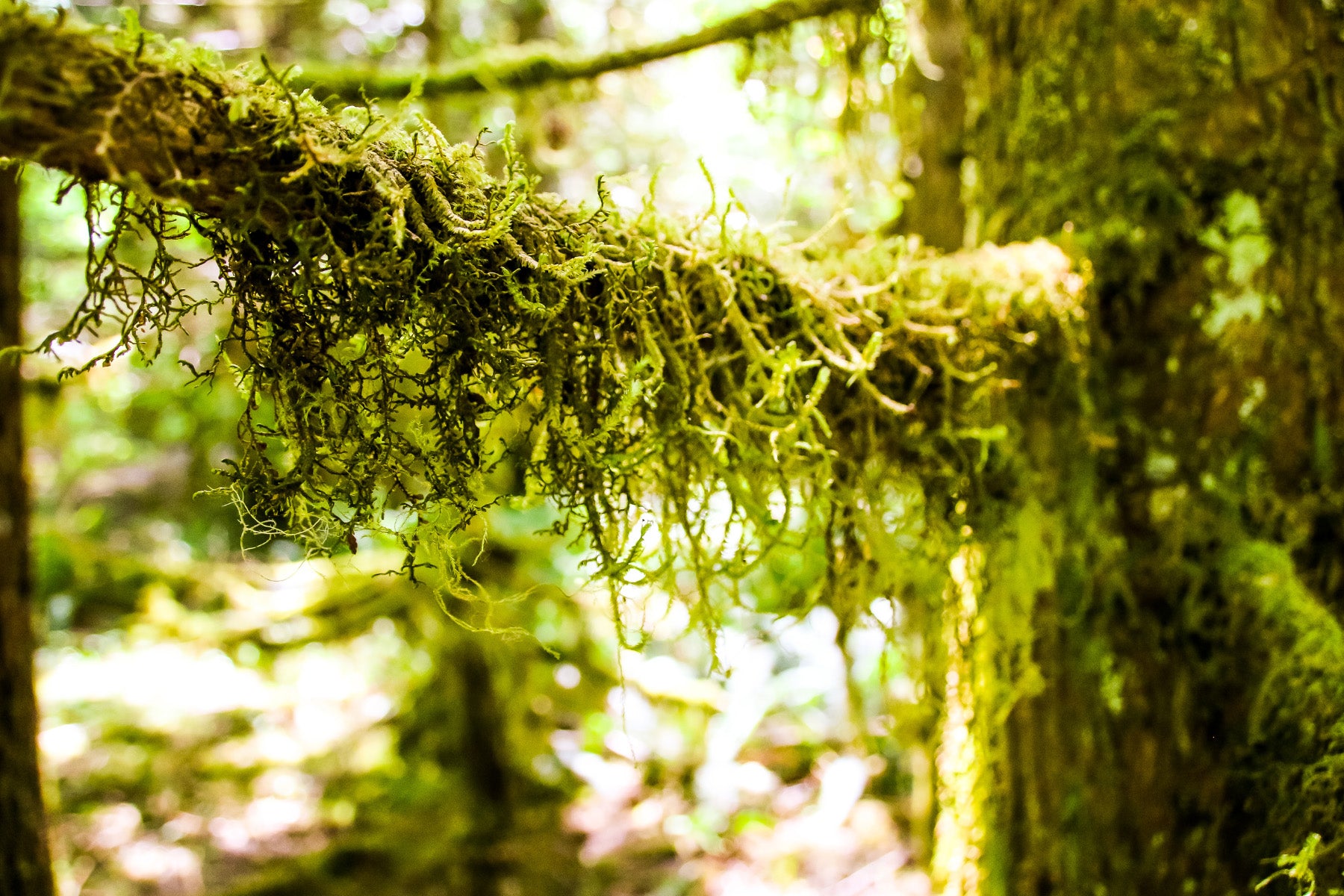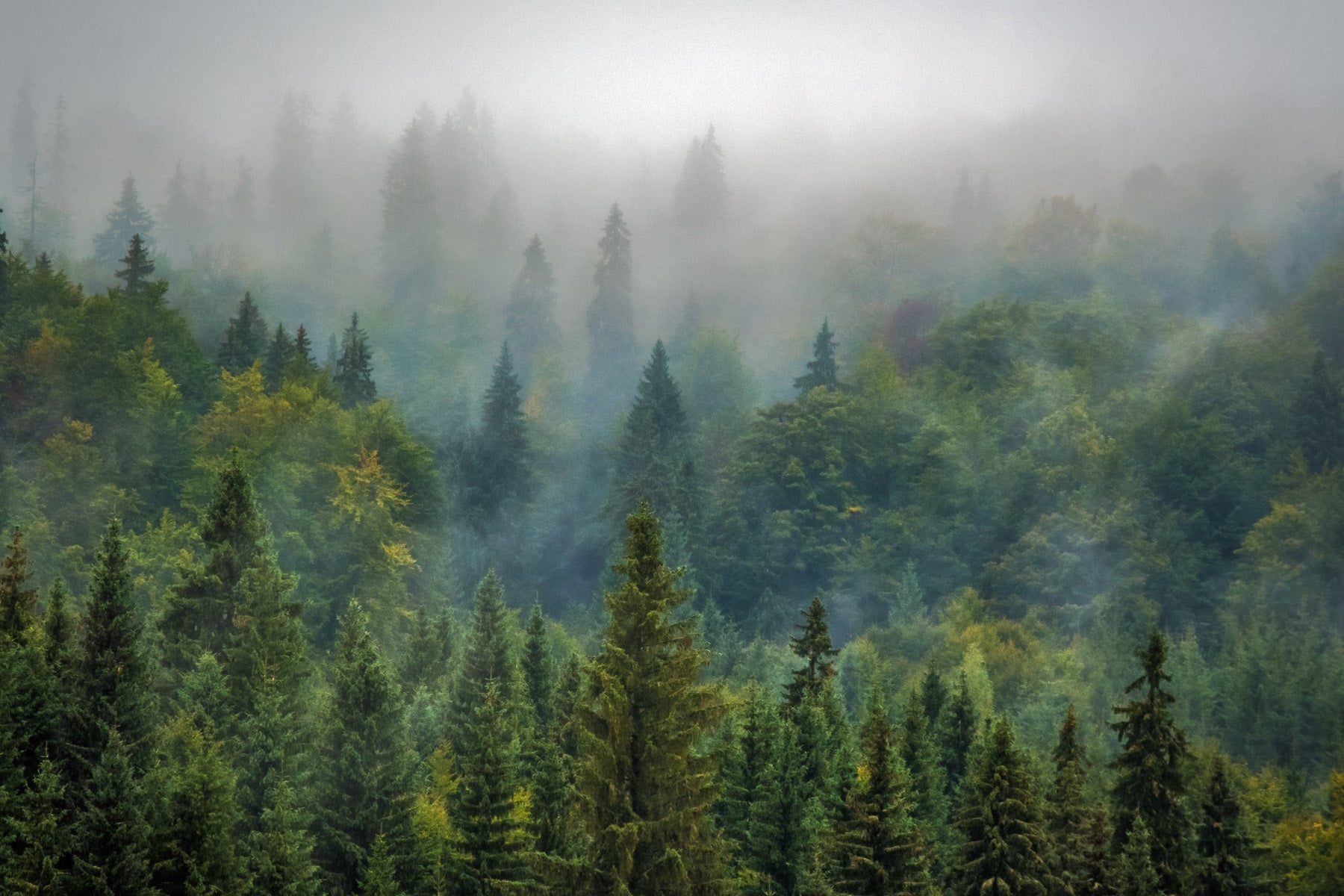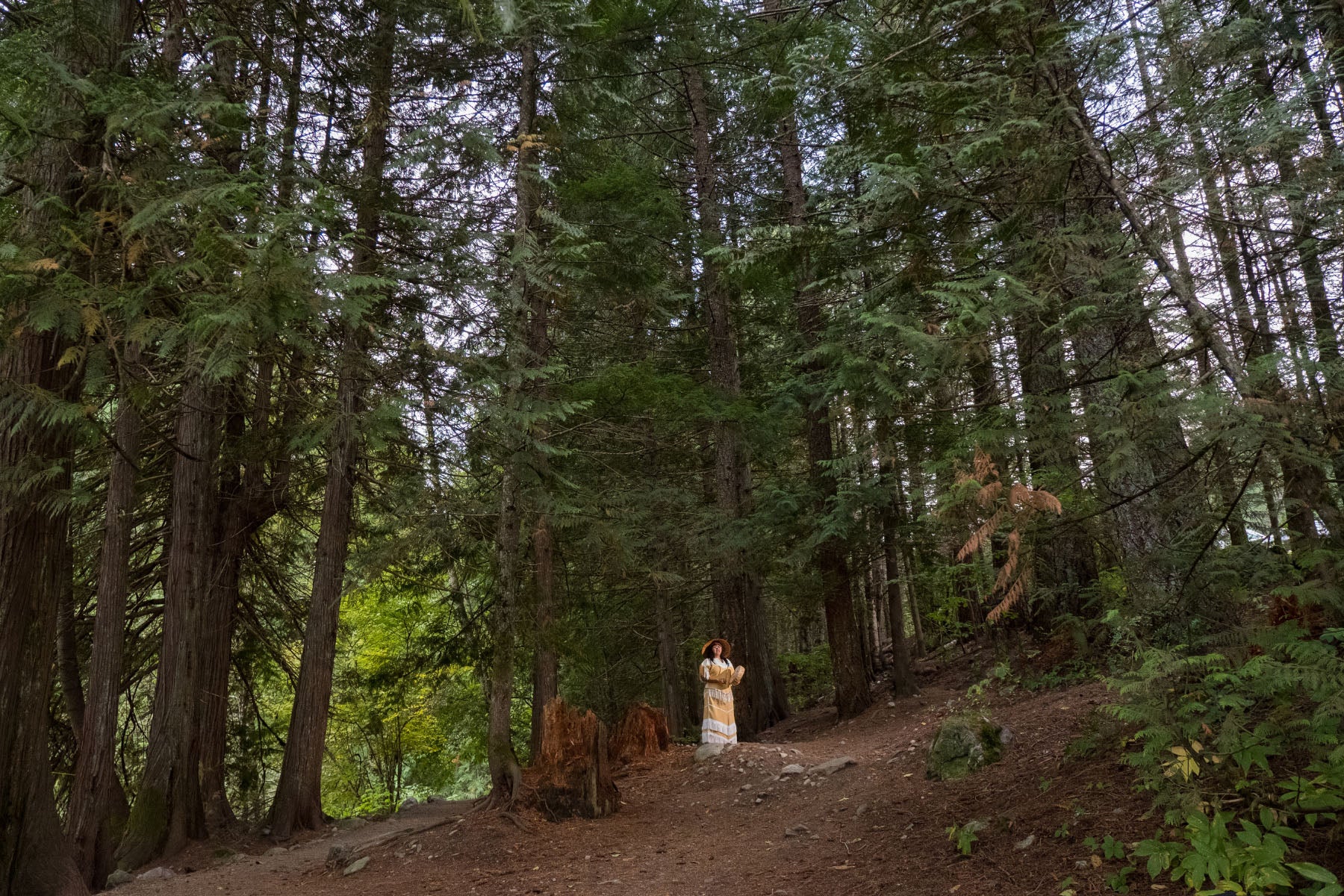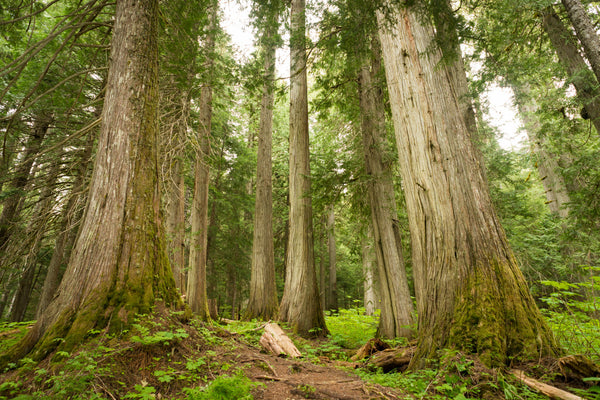Depending on where you are located, you may refer to them as primary forests, virgin forests, primeval forests, late seral forests, or ancient woodlands. Regardless of what they are called in your neck of the woods (no pun intended), old growth forests play an essential role in the health of the interconnected environment, and our planetary health as a whole. And in today’s world, they are, unfortunately, increasingly rare.
An old-growth forest can be defined as a forest that has developed over a long period of time, largely free from catastrophic disturbances. These tracts contain large, old growth trees of long-lived species that have grown past the traditional age of harvest. Importantly, a forest does not have to be ancient to be considered old-growth, as different tree species have vastly different life spans. For example, bristlecone pines can live as long as 5,000 years, while other tree species may only live 150 years. From the perspective of researchers, the important thing here is that they are in forests that have been largely undisturbed by humans.
Due to the reduced disturbances to their natural development, old growth forests generally boast unique ecological features, and they may be recognized as climax communities (an ecological community where populations of plants or animals remain stable and exist in balance with each other and their environment).
Due to their age and complexity, they can support a stunning diversity of life, absorb stormwater and release it as sparkling clean water, and host intricate mycelial networks that relay messages between individuals underneath the soil surface.
Of course, old growth forests weren’t always so unique or rare. In fact, one study by Nature found that there are approximately 46% fewer trees on Earth than there were before humans started engaging in deforestation.
Here’s Why Old Growth Forests Are So Important
What do Old Growth Forests do and what makes them so important? Well, a lot of the same things that younger aged forests and growing trees do, but, in most cases, they do it better. That’s because the size and complexity of these ecosystems and the services they provide have developed over a much longer period of time.

1. Old-Growth Trees store massive amounts of carbon
Forests currently absorb around 30% of all global carbon emissions. And of that, the world’s largest and oldest trees are estimated to store a whopping 50% of all the aboveground carbon. But when old trees are cut down, they release their stores of carbon right back into the atmosphere. This is one of many reasons why it is particularly important to protect old growth forests. Where carbon storage is high, plant and animal diversity tends to be richer than anyplace else.

2. They shelter and protect sensitive species
The cool, shaded environments that older-aged forests provide is a much-needed respite for sensitive species, and for those that need time to migrate and adapt to a changing climate. Large trees create increasingly rare pockets of complex habitat for threatened and endangered aquatic and terrestrial species. And it doesn’t stop there — the canopy of these forests have their own ecosystem, often supporting a range of mosses, lichens, insects, and birds — and even seedling trees where there are pockets of soil on branches.

3. They are unparalleled in providing clean drinking water
Healthy trees and forests act as an all natural water treatment system. They can catch rainfall, regulate stormwater runoff, and purify waterways by absorbing pollution that is in the soil. Across the world, human settlements big and small rely on the services provided by forested areas for their clean drinking water. And if you haven’t guessed yet, old growth forests excel particularly well at this — these same services also help reduce the impacts of extreme weather events such as forest fires and floods.

4. They provide recreational benefits to local communities
Majestic old-growth trees, the ring of bird song, the rustle of woodland creatures in the undergrowth and the canopy above — it’s no small wonder that old growth forests attract visitors for a range of recreational activities such as hiking, camping, educational programming, forest bathing, and more. And of course, these recreational activities provide social and economic benefits to local communities.

5. They help improve air quality
Old-growth forests also help people breathe easier, both by intercepting particulate air pollution and by absorbing harmful greenhouse gases such as nitrogen dioxide and ozone. One famous example of this? The Amazon Rainforest produces and estimated 20% of all oxygen that is produced on land.

6. They are of incredible importance to indigenous communities
Approximately 28% of the Earth’s land area is managed by Indigenous peoples, and we are very fortunate for that. What they give, the land gives back: the old growth forests that indigenous peoples have called home for time immemorial provide priceless cultural, medicinal and ecological value to these communities, extending far beyond subsistance activities such as hunting, gathering, and fishing.

7. They host a stunning Diversity of life
While every old-growth forest is unique, what they have in common is a constantly growing and changing complexity that promotes symbioses among the species that call them home. Cast your eye anywhere in an old-growth forest and you will likely see several different species of mosses and lichen, broken branches, trunks that are cracked open, many species of trees, decaying “nurse logs” on the forest floor, a vast and layered canopy above. Over time, all these conditions have created pockets for a wide variety of life. According to scientists, this diversity is essential for resilience against a changing climate, protection against disease and infestation, encouraging genetic and species biodiversity, and more.
According to the FAO State of the Worlds Forests Report, the area of primary forest worldwide has decreased by over 80 million hectares since 1990. And today, climate change poses greater threats than ever to mature and old-growth forests, including increased wildfires, drought, excessive heat, more powerful storms, and pest invasions. And in countries around the world, from Indonesia and Brazil to United States and Canada, old-growth forests are still being deforested at a breathtaking rate.
Many of our projects work in or near old growth forests that have been degraded or deforested by a range of human and environmental impacts. Plant trees to help restore forests and ecosystem services today.
